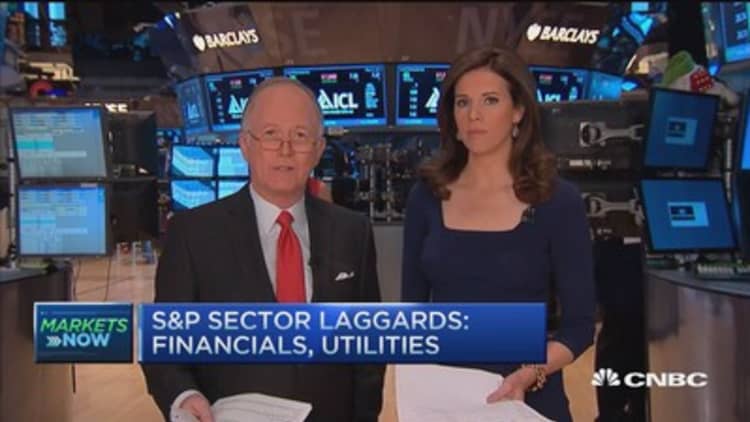
A historic divergence between the record-setting Dow industrials and the slide in the Dow transports has caught the eye of traders as a potential warning sign for stocks.
The split in performance between the two became especially noticeable after Wednesday's dramatic airline-led selloff in the Dow transports. But some strategists say the divergence does not necessarily mean a Dow Theory selloff will be triggered nor that a market collapse is at hand.
Bespoke, after studying past performance, said in a note that when Dow transports have underperformed the Dow industrials, there's been a "less than average" return for the Dow 30 over the next six months. But the underperformance was not an "indicator of an impending bear market or equity crash."
Transports rebounded Thursday, after a sharp decline in airlines drove the transports nearly 2 percent lower on Wednesday. The Dow was just slightly higher Thursday, after closing just modestly lower Wednesday at 18,285.
Dow Theorists believe that a major trend in the market is not confirmed until both the Dow industrials and the Dow transports reach either new highs or new lows.
Bespoke noted that the spread between the two indexes was historically high—at more than 9 percent—but it ranks only in the 83rd percentile of all readings. But what is extreme is that the Dow transports, for the first time since 1900, closed at a six-month low while the Dow industrials were within 10 points of an all-time high.
Read MoreGet on board airlines: Trader
Art Cashin, director of floor operations for UBS at the NYSE, said the action in transports on Thursday was encouraging. He said traders were watching the 8,500 support level the transports came close to Wednesday and temporarily traded below on Thursday before bouncing higher.
"Was it going to go into a free fall? Luckily it didn't," he said. The transports hit a low of 8,502 on Wednesday but fell as low as 8,488 on Thursday. "I don't think you're completely out of the woods yet."
Cashin said the divergence has caught a lot of attention because it has been going on for an unusual length of time. "At some point, you expect it to have a reaction."
Raymond James' chief investment strategist, Jeffrey Saut, said he too is watching the divergence but thinks it's more likely the market breaks higher, with the S&P 500 at an all-time high.
"A few months ago, you had a nonconfirm on the upside. Transports weren't keeping up. Now you have a downside nonconfirm with the transports breaking down totally unconfirmed by the industrials," said Saut.
Read MoreStreet, Fed making this big mistake: Jim Paulsen
The transports are down about 5.7 percent over the past six months while the Dow is nearly 3 percent higher.
"For me to get a Dow Theory sell signal, you're going to have to have the transports come down to close below the Oct. 13, 2014, low, 7,717.69, with a confirmation by the industrials," Saut said, noting the Dow would have be at 16,117.24, its Oct. 16 closing low.
Goldman Sachs, and other firms, reaffirmed their buy on airlines Thursday after Wednesday's weakness.
"The rails had been weak, and they handed the baton off to the airlines in the last couple of days," Saud said. "You have one-off situations." Rails were impacted by higher oil prices because they are carrying less oil cargo, while airlines were hurt by the potential for price wars and higher fuel, he noted.
Bespoke noted that before the current divergence, there have been only two other instances since 1900 where the Dow industrials even closed within 1 percent of a six-month high, while the Dow transports closed within 1 percent of a six-month low. Those two occurrences were in the summer of 1994 and the summer of 1999.
In 1994, the Dow industrials rallied more than 4 percent within six months and saw a maximum decline of 4.8 percent. But after the 1999 occurrence, the Dow industrials fell 3.9 percent over the following six months and were as much as 8.8 percent lower.
The transports, in both periods, declined in the following six months, by as much as 12.8 percent in 1994 and 24 percent in 1999.


